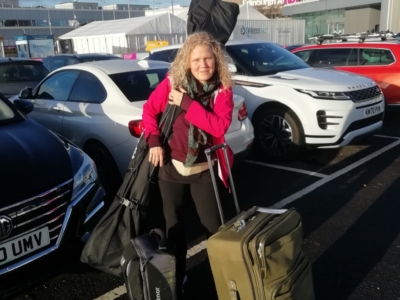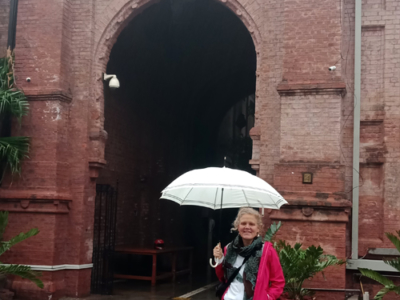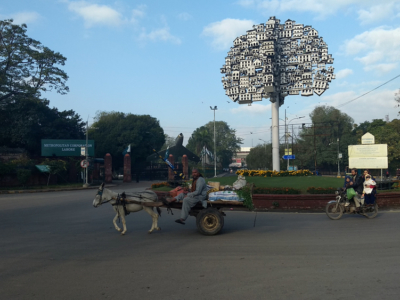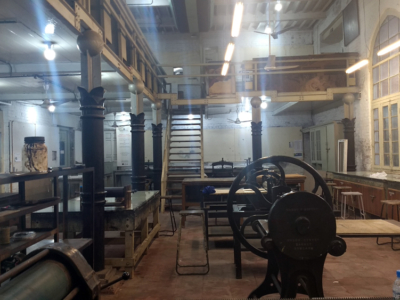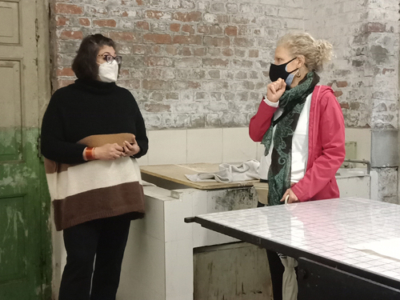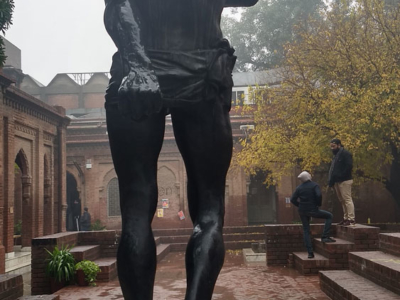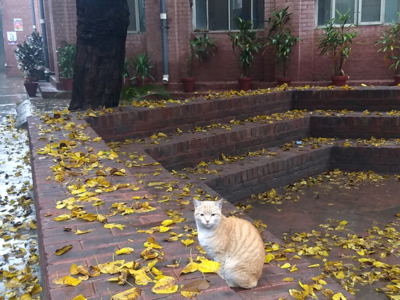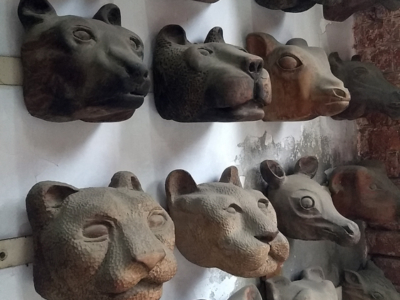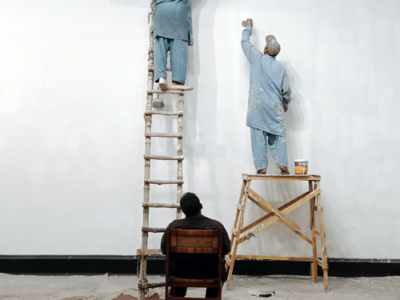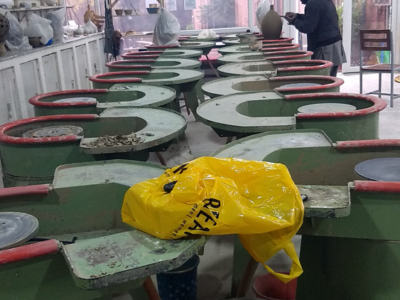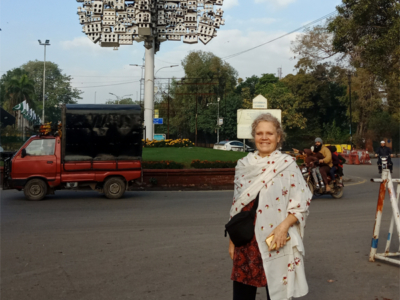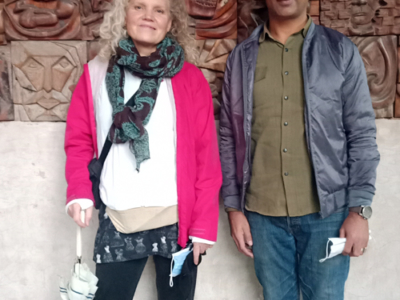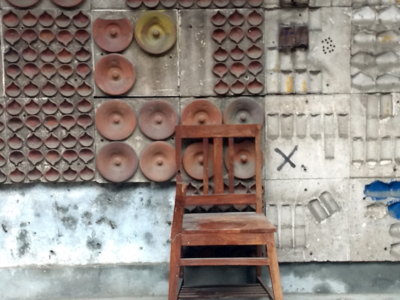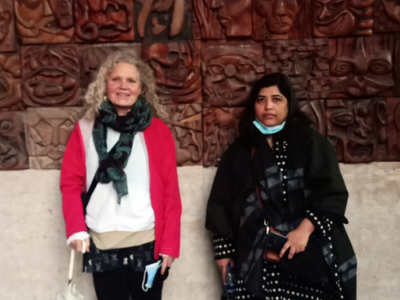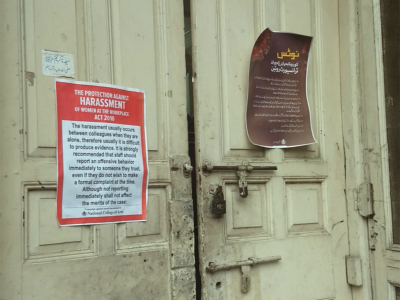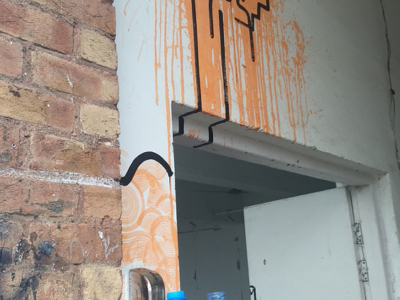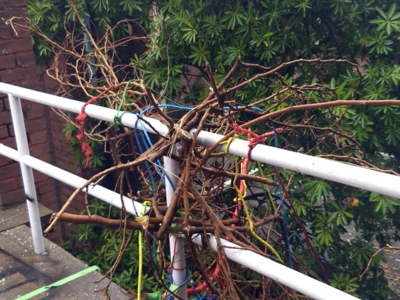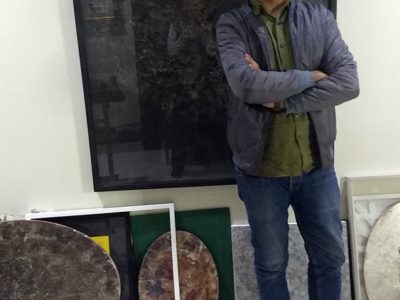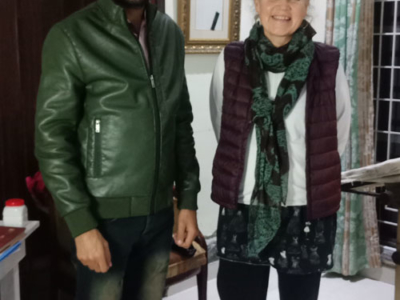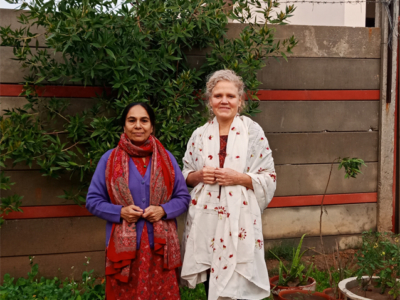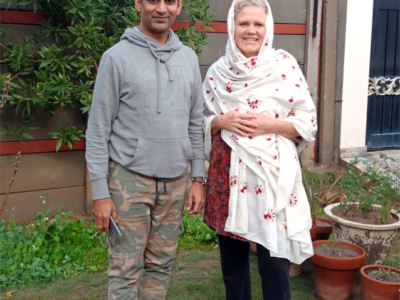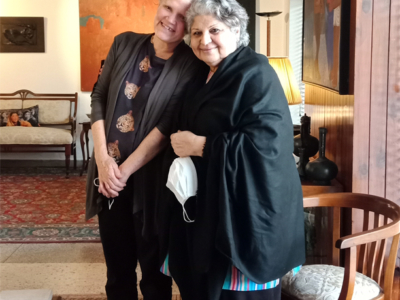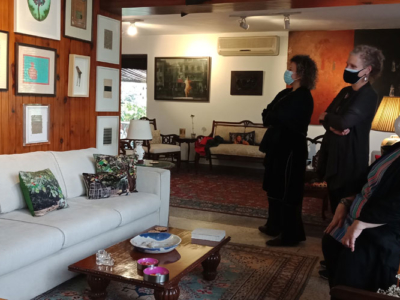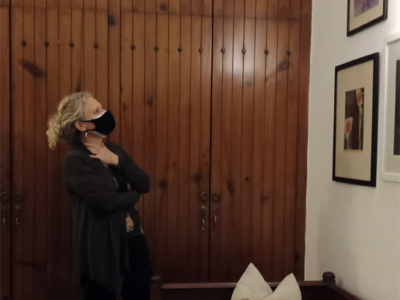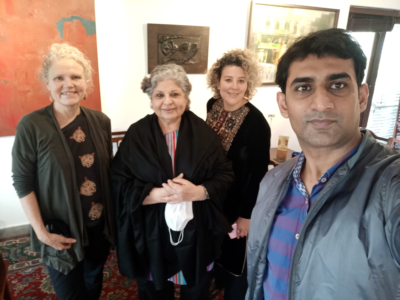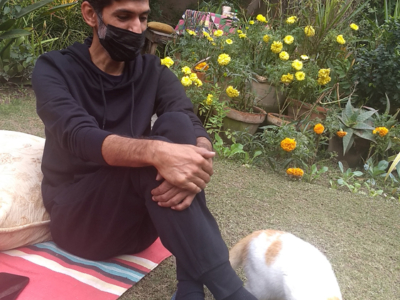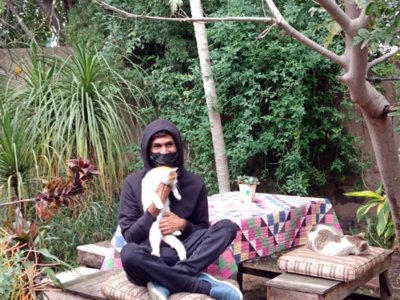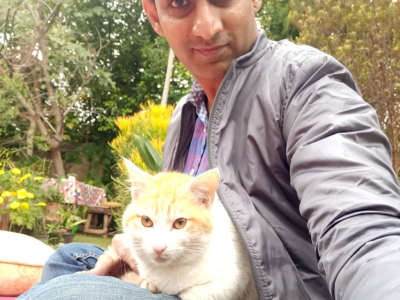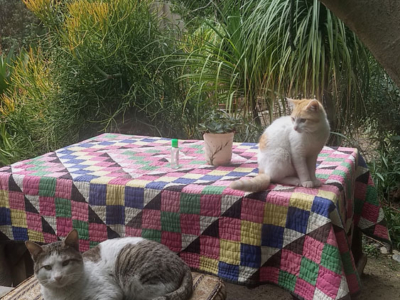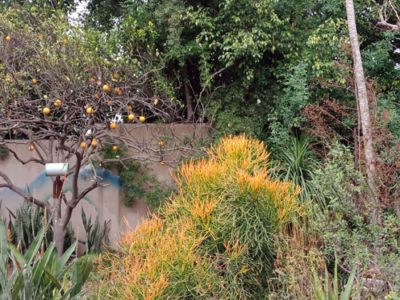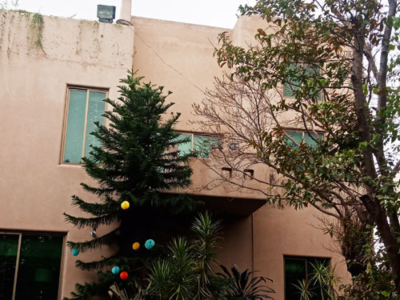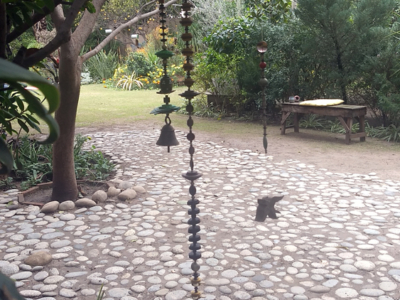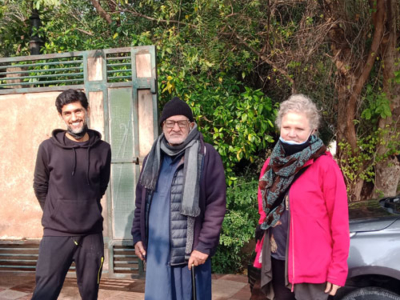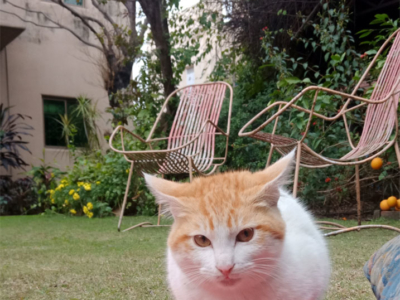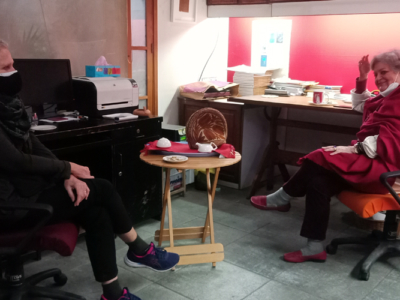[alg_back_button]
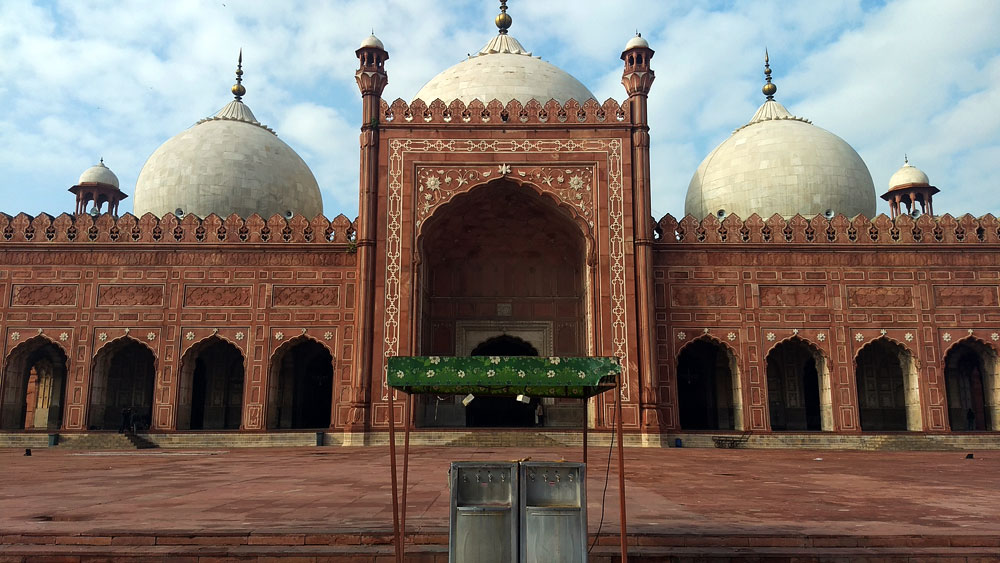
Your Portfolio Archive currently has no entries. You can start creating them on your dashboard.
On January 5th I left Edinburgh for Pakistan laden with bags including two rolled paintings and a projection screen in a ski bag and a projector and laptop in my carry on. (Curator Sana Bilgrami had left the week before carrying 14 of my paintings!) I arrived on January 6th in Lahore finally meeting artist Farrukh Addnan for the first time in person. After 9 months of Zoom calls during the Ecologies of Displacement residency it was completely amazing to finally meet in real life! Though there was torrential rain in Lahore, Farrukh set about introducing me to his amazing city and the rain felt like a particularly Scottish welcome!
Our first stop was the National College of Arts Pakistan’s flagship art college where Farrukh also works as a lecturer. The NCA campus of red sandstone buildings, courtyards (and cats!) is located in Gulberg a busy district of Lahore where you can see evidence of NCA’s influence everywhere – for example a beautiful work created entirely from functioning birdhouses located on Istanbul Chowk on the roundabout just outside the gates of NCA. We visited the beautiful print studios first, meeting artist and Head of Printmaking Laila Rahman (who’s work we were also privileged to see at Rangrez Gallery in Lahore). Assessments were underway at NCA and final year students were also preparing their thesis shows so students and staff were everywhere working hard! Dodging the downpours, Farrukh and I met up with artist Ozma Bhattia and were lucky enough to sit in on a Music Theory assessment session where student DJs presented and performed their sound works – a wonderful mix of jazz, dance/trance beats and voice with traditional South Asian instruments. The students were so enthusiastic and supportive of each others work! As the downpour and flooding continued our plans to visit the old walled city were shelved. Instead we had a wonderful lunch at NCA with staff and visiting lecturers.
We finished the day by visiting Farrukh’s home which he shares with his two brothers and mum Nasreen Kousar. This is also where Farrukh keeps his studio. It was fantastic to finally see Farrukh’s studio after glimpsing it on Zoom for months. What he has produced in this relatively small space off a busy communal area of the house has been amazing – including a 27 foot scroll for the Ecologies of Displacement exhibition! The welcome from Farrukh’s mum Nasreen (more wonderful, delicious food!) his brothers and sister in law, ( plus three year old nephew and tiny new baby niece) was fantastic – an amazing end to my first day in Pakistan.
Day two began with brunch at the home of Professor Naazish Attaulah renowned artist and scholar (and former principal of NCA) . The omelettes and stuffed parathas were absolutely to die for as we talked about the wonderful objects and artworks that were everywhere in Naazish’s beautiful house. Colombian fellow traveller Carolina Trevisi had also stopped by to visit and we had a lively conversation about travel, art, craft, the significance of trace memory within the objects we make and keep, the importance of practice as a means to somehow codify our lived experience. I had met Naazish virtually in 2020 when she moderated one of the webinars for Landscape of Memory but It was amazing to spend time in her company talking about work and life and being immersed in her wonderful art collection – it was such a privilege that ended too soon!
Farrukh and I then visited the home of Usman Saeed artist, researcher, educator, and gardener. I had also met Usman during Landscape of Memory. His beautiful searching work and contemplative conversation were a real inspiration. It was such a treat to finally meet in person, sit in his garden on pillows beneath the trees and talk about gardening, the gift of the rain, the companionship of cats and the state of the world – importantly our role as artists and people to somehow steer things in the right direction. He introduced us to Mother Cat and kitten Gaspar and showed us the ‘cat bridge’ he had built through the trees to allow Mother and Gaspar to come into the first floor bedroom at night. Definitely my kind of place! It being winter in Pakistan, we finished with tea and beautiful food before a raging fire in Usman’s house. Visiting Usman was a highlight of Lahore, his wonderful garden an island of tranquility in a world of upheaval, time spent there was an opportunity to feel how a better future could be created. In a final moment as we left Usman’s, Farrukh and I had the opportunity to briefly meet Usman’s father legendary portrait painter Saeed Akhtar. Just magic.
As the sun set we headed to Rohtas2 Gallery to meet another significant figure in Pakistani art, renowned painter, curator and activist Professor Salima Hashmi former Dean of NCA. The gallery, (unfortunately shut due to Covid-19) is wonderfully set in Salima’s beautiful home a rambling house of courtyards and art. Having tea with Salima and fellow artists Asad Hayee and Sheraz Faisal we talked of travel, the politics of Pakistan, Feminism and the important role artists play in the ecology of protest which in the context of Pakistan can be risky. A reminder that artists, especially relatively privileged ones from the West, have a responsibility to carry forward the legacy of work and protest of artists that have come before.
On day three when the rain finally stopper, we the plan was to drive to Farrukh’s hometown of Tulamba. However in the morning we managed to squeeze in a trip to the old part of Lahore including one of its most iconic landmarks Badshahi Mosque (The Royal Mosque). An incredibly impressive and beautiful carved red sandstone series of buildings constructed by the Mughal emperor Aurangzeb between 1671 and 1673, Badshahi was the largest mosque in the world from 1673 to 1986. It is a staggering place to visit, completely covered in carvings and frescoes with monumental vistas of endless archways stretching in every direction. In addition to the Mosque the area also houses the Lahore Fort, a citadel and massive fortress that houses the old city, including the stunning Picture Wall, Naulakha Pavilion, and Sheesh Mahal and courtyard full of mirror tiles and frescoes. One of the most moving sites near the fort was the tomb of Pakistan’s national poet Muhammad Iqbal a small red sandstone building with pristine white marble interior and tomb decorated with a single strand of chrysanthemums.
After only 2 and a half days we barely scratched the surface of Lahore a city of beauty , art and mystery that I would love to visit again.
